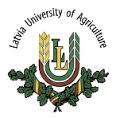Resource information
Soil quality is one of the most important factors determining the potential for obtaining a high profit from farming. The agricultural quality of soils is described by soil quality classes, and the suitability of soils for growing particular plants or plant communities is described in terms of soil-agricultural complexes. A unified soil classification has been developed for the entire area of Poland, which takes into account the morphological features and physical properties of Polish soils. This classification is a comprehensive descriptive and cartographic study providing rich material in the form of classification maps drawn to the scales of inventory maps. Spatial and economic studies of rural areas often use the method of grouping individual villages by shared features into larger typological classes. This classification was used to develop a land assessment method for the purposes of consolidation and exchange of land. The applicability of this land use classification in economic practice can be enhanced, if the classes are defined by one measure in the form of a productivity index rather than being expressed as a soil quality coefficient. The goal of this paper was to calculate the suitability index for cropland land and grasslands, which could be used to assign villages to similar-suitability groups. The research area encompassed 17 villages of the Księżpol commune, located in the Lubelskie Voivodship, occupying a total area of 1,125.82 ha and divided into 17,513 land parcels (cadastral plots). Data on the surface area occupied by land belonging to the individual land classes were obtained from the county land and buildings register, and the index was calculated on the basis of point values assigned on a 100-point scale. The tests have shown that the application of a single number as the value of productivity for cropland and grassland provides a possibility of grouping respective villages into larger typological units with regard to the similarity of features.



